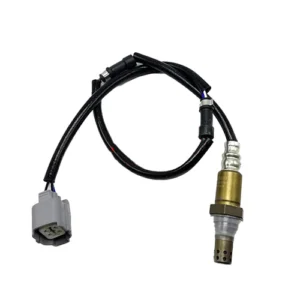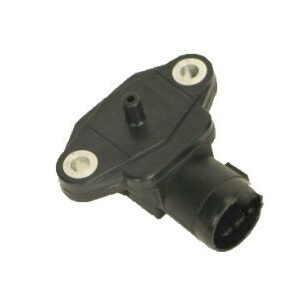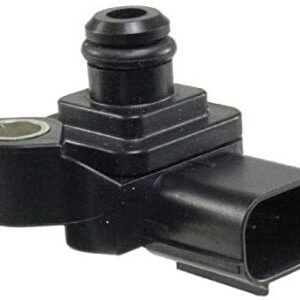Title: VVT Solenoid: The Precision Tuner of Modern Engines
In the dynamic world of automotive engineering, where power meets efficiency, the Variable Valve Timing (VVT) solenoid emerges as a silent yet crucial component, fine-tuning engine performance with precision. Despite its modest size, this unassuming solenoid plays a pivotal role in optimizing valve timing, enhancing power delivery, and improving fuel economy. In this blog, we’ll delve into the significance of the VVT solenoid, how it works, its importance in engine operation, and its indispensable contribution to the driving experience.
### Unveiling the VVT Solenoid
The Variable Valve Timing (VVT) solenoid is a critical component of modern engine management systems. Positioned on the cylinder head or engine block, its primary function is to control the oil flow to the VVT mechanism, allowing for adjustments in valve timing.
### How the VVT Solenoid Works
The VVT solenoid operates using electromagnetic principles. When commanded by the engine control unit (ECU), the solenoid opens or closes, regulating oil flow to the VVT mechanism. This, in turn, adjusts the position of the camshaft sprocket or phaser, altering valve timing to optimize engine performance under different driving conditions.
### Importance of the VVT Solenoid in Engine Operation
1. **Optimizing Valve Timing**: The VVT solenoid enables dynamic adjustment of valve timing, optimizing engine performance across the entire RPM range. By advancing or retarding valve timing as needed, the solenoid improves torque delivery, enhances power output, and reduces emissions.
2. **Enhancing Fuel Efficiency**: Variable Valve Timing technology allows engines to operate more efficiently by maximizing airflow and fuel combustion. The VVT solenoid plays a crucial role in this process by fine-tuning valve timing, improving fuel economy without sacrificing performance.
3. **Improving Driveability**: Variable Valve Timing enhances engine responsiveness and drivability by optimizing valve timing for different driving conditions. The VVT solenoid ensures smooth transitions between low-end torque and high-end power, delivering a seamless driving experience under various load and throttle conditions.
### Signs of a Failing VVT Solenoid
– **Check Engine Light**: An illuminated check engine light on the dashboard may indicate a problem with the VVT solenoid or its circuitry.
– **Poor Engine Performance**: Decreased engine performance, including reduced power, hesitation, or rough idle, may occur if the VVT solenoid is malfunctioning or not responding properly.
– **Increased Emissions**: Engine emissions may increase if the VVT solenoid fails to adjust valve timing correctly, leading to inefficient combustion and higher pollutant emissions.
### Conclusion
In the intricate symphony of engine performance and efficiency, the VVT solenoid stands as a silent conductor, orchestrating precise adjustments in valve timing with each command from the engine control unit. From optimizing valve timing to enhancing fuel efficiency and improving driveability, its role in shaping engine performance and responsiveness is indispensable. As automotive technology continues to advance, the importance of VVT solenoids in achieving optimal engine operation remains undeniably critical, ensuring that vehicles navigate the roads with power, efficiency, and precision.
In stock (can be backordered)
$29,137.67
Title: VVT Solenoid: The Precision Tuner of Modern Engines
In the dynamic world of automotive engineering, where power meets efficiency, the Variable Valve Timing (VVT) solenoid emerges as a silent yet crucial component, fine-tuning engine performance with precision. Despite its modest size, this unassuming solenoid plays a pivotal role in optimizing valve timing, enhancing power delivery, and improving fuel economy. In this blog, we’ll delve into the significance of the VVT solenoid, how it works, its importance in engine operation, and its indispensable contribution to the driving experience.
### Unveiling the VVT Solenoid
The Variable Valve Timing (VVT) solenoid is a critical component of modern engine management systems. Positioned on the cylinder head or engine block, its primary function is to control the oil flow to the VVT mechanism, allowing for adjustments in valve timing.
### How the VVT Solenoid Works
The VVT solenoid operates using electromagnetic principles. When commanded by the engine control unit (ECU), the solenoid opens or closes, regulating oil flow to the VVT mechanism. This, in turn, adjusts the position of the camshaft sprocket or phaser, altering valve timing to optimize engine performance under different driving conditions.
### Importance of the VVT Solenoid in Engine Operation
1. **Optimizing Valve Timing**: The VVT solenoid enables dynamic adjustment of valve timing, optimizing engine performance across the entire RPM range. By advancing or retarding valve timing as needed, the solenoid improves torque delivery, enhances power output, and reduces emissions.
2. **Enhancing Fuel Efficiency**: Variable Valve Timing technology allows engines to operate more efficiently by maximizing airflow and fuel combustion. The VVT solenoid plays a crucial role in this process by fine-tuning valve timing, improving fuel economy without sacrificing performance.
3. **Improving Driveability**: Variable Valve Timing enhances engine responsiveness and drivability by optimizing valve timing for different driving conditions. The VVT solenoid ensures smooth transitions between low-end torque and high-end power, delivering a seamless driving experience under various load and throttle conditions.
### Signs of a Failing VVT Solenoid
– **Check Engine Light**: An illuminated check engine light on the dashboard may indicate a problem with the VVT solenoid or its circuitry.
– **Poor Engine Performance**: Decreased engine performance, including reduced power, hesitation, or rough idle, may occur if the VVT solenoid is malfunctioning or not responding properly.
– **Increased Emissions**: Engine emissions may increase if the VVT solenoid fails to adjust valve timing correctly, leading to inefficient combustion and higher pollutant emissions.
### Conclusion
In the intricate symphony of engine performance and efficiency, the VVT solenoid stands as a silent conductor, orchestrating precise adjustments in valve timing with each command from the engine control unit. From optimizing valve timing to enhancing fuel efficiency and improving driveability, its role in shaping engine performance and responsiveness is indispensable. As automotive technology continues to advance, the importance of VVT solenoids in achieving optimal engine operation remains undeniably critical, ensuring that vehicles navigate the roads with power, efficiency, and precision.
| Weight | 0.26 kg |
|---|---|
| Warehouse | Inventory at warehouse 2 |



Get E-mail updates about our latest products and special offers.
Sensors and More is Jamaica’s ultimate online auto parts store. Established in 2020, we specialize in genuine electrical parts for Japanese, Read more…
Reviews
There are no reviews yet.